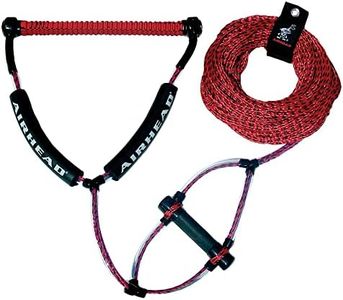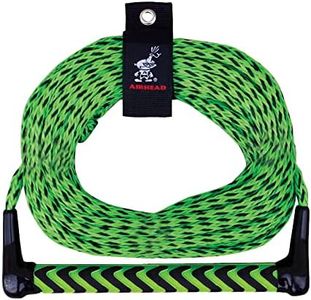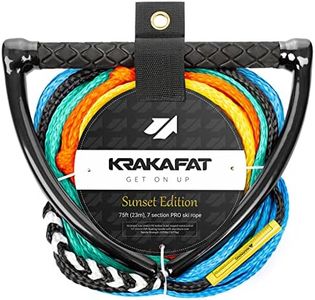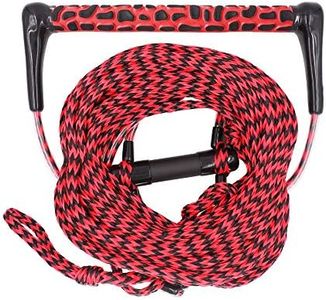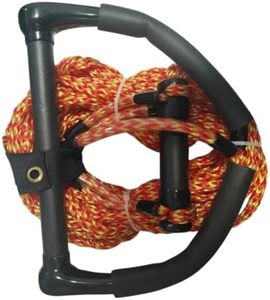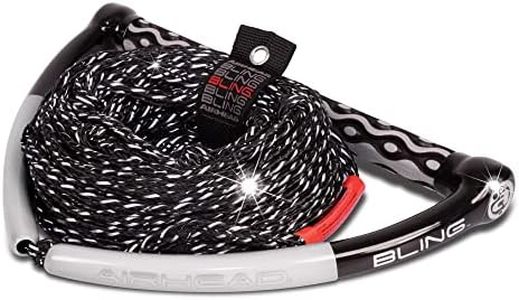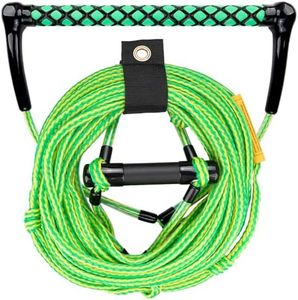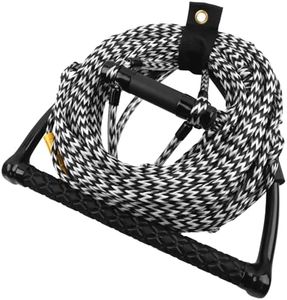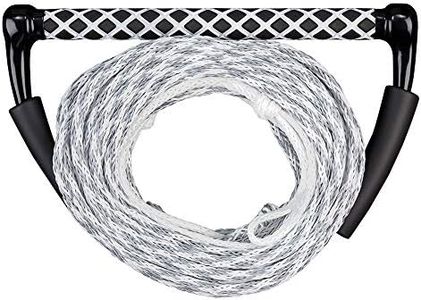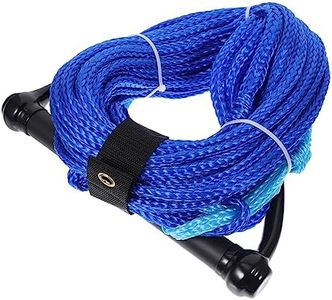We Use CookiesWe use cookies to enhance the security, performance,
functionality and for analytical and promotional activities. By continuing to browse this site you
are agreeing to our privacy policy
10 Best Wakeboard Ropes
From leading brands and best sellers available on the web.Buying Guide for the Best Wakeboard Ropes
Picking the right wakeboard rope is important not just for your safety, but also for the overall enjoyment and performance of your wakeboarding experience. There are a few key features and specifications that really matter when it comes to ropes for wakeboarding. Understanding what these specs mean and how they match your style or skill level will help you find a rope that performs well for your needs. The type of rope you choose can affect how you launch off the wake, your control in the air, and the general consistency of your rides. So, by focusing on these important factors, you can set yourself up for a more satisfying time on the water.Rope MaterialRope material determines how the rope will stretch and how durable it is. Most wakeboard ropes are made from either polyethylene or spectra/dyneema fibers. Polyethylene ropes are more stretchy, which can sometimes make the pull feel less precise, but they may be more forgiving for beginners. Spectra or Dyneema ropes are much stronger, lighter, and have almost no stretch, making them the best for those who want consistent pull and performance. Opt for low-stretch or no-stretch materials if you are looking for advanced tricks, as these ropes give you better control and less unpredictable slack.
Rope LengthThe length of your wakeboard rope can change how you hit the wake and how easy it is to do certain tricks. Typical rope lengths range from around 55 to 80 feet. Shorter ropes (55-65 feet) keep you closer to the boat where the wake can be larger and more defined, making it easier for beginners to jump and land. Mid-range (65-75 feet) ropes are good for intermediates who want more space and room for progression. Longer lengths (75-80+ feet) are mostly used by advanced riders who need a wider area and more speed for large tricks. Think about your riding style and skill level: shorter for easier learning, longer for more experienced and adventurous riding.
Handle GripThe handle grip is what your hands will be holding throughout your ride, so comfort and grip are really important. Handles can come with different coatings and shapes — like rubber, EVA foam, or even special textures. Thicker or molded grips are good if you have larger hands, while thinner grips might be better for smaller hands or if you want a lighter feel. Some handles also offer extra features like finger grooves for better control. Try to pick a handle that feels comfortable for your hand size and that provides a good, non-slip grip especially when wet.
Handle WidthHandle width affects how you can move the rope and handle for spins and tricks. Wider handles (15 inches or more) give you more space, which is especially helpful if you’re planning on doing tricks that require you to pass the handle behind your back. Narrower handles are lighter and can be easier for smaller riders or basic riding styles. If you are just starting out, a standard width might be best, but if you’re interested in learning advanced maneuvers, a wider handle may offer more versatility.
Sections and AdjustabilitySome wakeboard ropes come in fixed lengths, while others have removable sections that let you adjust the length quickly. Adjustable ropes are useful if multiple people will use the same rope or if you like to change up your riding style between sets. They allow you to fine-tune your position on the wake without needing completely new equipment. If you share your setup with friends or want flexibility as you grow your skills, pick a rope that offers easy adjustment through removable sections.

